Bio Crop
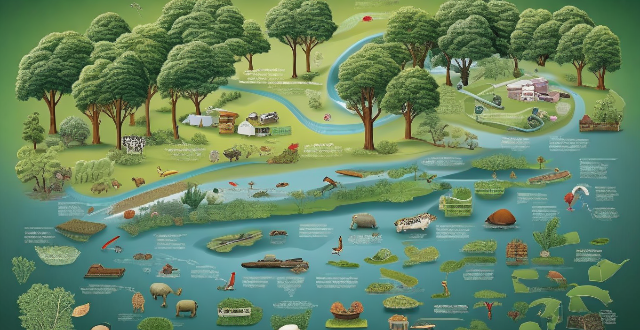
How do rising temperatures and altered precipitation patterns influence crop yields and food availability ?
This article explores the impact of global climate change on agriculture, specifically focusing on rising temperatures and altered precipitation patterns. It highlights how these changes can affect crop yields through increased evapotranspiration, altered growth cycles, pest and disease pressure, and changes in pollination. Additionally, it discusses how rising temperatures can impact food availability by altering the distribution of crops, increasing post-harvest losses, and causing market price fluctuations. The article also examines the effects of altered precipitation patterns on crop yields and food availability, including water stress, nutrient leaching, flooding, soil erosion, and irrigation needs. Finally, it emphasizes the importance of understanding these impacts and developing strategies to mitigate their effects on crop yields and food availability to ensure food security for future generations amidst a changing climate.

What is the connection between biodiversity and food security ?
The connection between biodiversity and food security is crucial, as biodiversity contributes to crop pollination, natural pest control, soil health, and genetic resources for crop improvement. Loss of biodiversity can lead to reduced crop yields, increased use of pesticides, loss of genetic diversity, and economic impacts on farmers. Sustainable agriculture practices such as agroforestry, conservation agriculture, integrated pest management, and crop rotation/intercropping can help maintain biodiversity while ensuring food security.
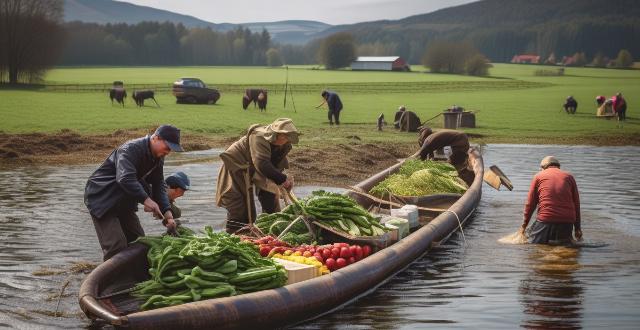
How can we ensure food security in the face of extreme weather events caused by climate change ?
The article discusses strategies for ensuring food security in the face of extreme weather events caused by climate change, including diversifying crop production, improving water management, using climate-resilient crop varieties, adopting sustainable agricultural practices, strengthening early warning systems and disaster risk reduction, supporting smallholder farmers, and promoting policy coherence and international cooperation.

What are the effects of extreme weather events on agriculture ?
Extreme weather events such as droughts, floods, heatwaves, and storms have significant impacts on agriculture. These effects can be categorized into direct and indirect consequences, including reduced crop yields, soil degradation, crop destruction, soil erosion, heat stress, water loss, physical damage to crops and livestock, economic impacts, food security issues, environmental impacts, and social impacts such as rural poverty and migration. Addressing these challenges requires a comprehensive approach that takes into account both the immediate needs of affected farmers and the long-term resilience of agricultural systems.

What role does technology play in addressing climate change in agriculture ?
Technology plays a crucial role in addressing climate change in agriculture through precision farming, drought-tolerant crops, soil health management, livestock management, energy efficiency and renewable energy, and climate data analysis and modeling. These technologies help farmers adapt to changing weather patterns, improve crop yields, reduce greenhouse gas emissions, and increase the efficiency of resource use.
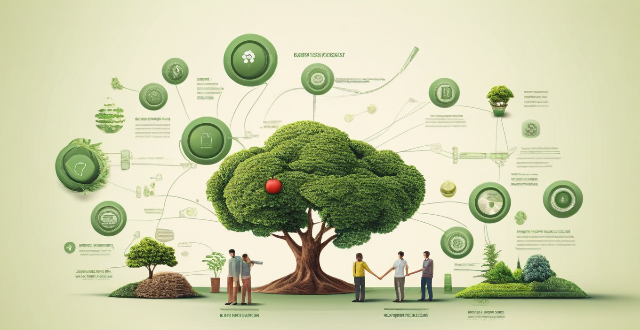
What are the benefits of using climate services in agriculture ?
Climate services offer significant benefits to agriculture, enhancing productivity and sustainability. They aid in crop planning, risk mitigation, resource optimization, market competitiveness, and environmental stewardship. By using these services, farmers can make informed decisions about crop management and resource allocation, leading to a more resilient and profitable agricultural sector.
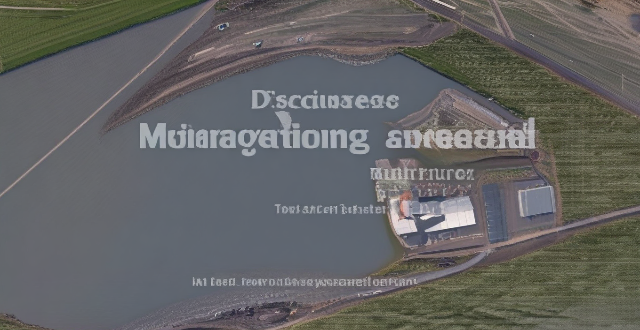
What are some emerging trends in the field of energy storage materials research ?
The text discusses the latest trends in energy storage materials research, focusing on solid-state batteries, flow batteries, metal-air batteries, supercapacitors, redox flow batteries, hybrid energy storage systems, nanostructured materials, smart grid integration, thermal energy storage, and organic/bio-based materials. Each section provides a brief overview of the technology's advantages and current research challenges.

How can IoT be used in agriculture ?
The Internet of Things (IoT) is transforming agriculture by enabling precision farming, crop monitoring, resource management, and livestock management. IoT technologies such as soil moisture sensors, weather stations, drones, GPS-guided equipment, remote sensing, smart traps, yield mapping, smart irrigation systems, variable-rate fertilizer application, energy-efficient lighting, waste management systems, health monitoring devices for livestock, automated feeding systems, milking parlors with sensors, and animal tracking devices are revolutionizing farming practices. These technologies provide farmers with real-time data and insights into their operations, increasing efficiency, reducing costs, improving crop yields, and minimizing environmental impact.

What is the impact of climate change on agricultural employment ?
Impact of Climate Change on Agricultural Employment: - Reduced Crop Yields due to droughts, floods, and loss of biodiversity can lead to job losses. - Changes in Cropping Patterns, such as shifting to new crops or shortened planting seasons, may require different skillsets and reduce employment opportunities. - Increased Pest and Disease Pressure can result in more labor for monitoring and management but also potential job losses from crop failures. - Infrastructure Damage and Displacement caused by extreme weather events can affect farming operations and employment levels. - Adaptation and Resilience Efforts, including developing resilient crop varieties and adopting sustainable farming practices, can create new job opportunities.
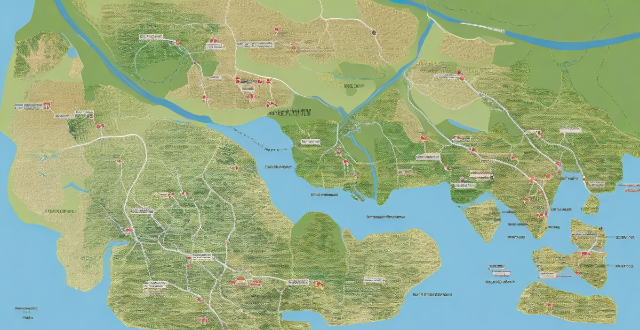
How has global warming affected agricultural practices and food security ?
Global warming has significantly influenced agricultural practices and food security worldwide, affecting areas such as altered climate conditions, pest and disease management, crop variety and production, and food security concerns. These changes include irregular rainfall patterns leading to droughts and floods, water scarcity, extreme temperature fluctuations causing heat waves and cold spells, increased pest infestations and new pest species introduction, elevated disease risks, changes in crop yields and shifting production regions, altered planting seasons, price volatility, supply disruptions, nutrient depletion, and loss of biodiversity. Farmers must adapt to these new realities to ensure sustainable food systems for the future.

What are the economic implications of climate change for the agricultural sector ?
The text discusses the economic implications of climate change for the agricultural sector, including changes in crop yields, increased costs of production, shifts in trade patterns, and the need for adaptation strategies. Climate change can lead to a decrease in crop productivity due to extreme weather events, changes in temperature and rainfall patterns, and pests and diseases. The unpredictability of weather patterns makes it difficult for farmers to plan their crops and manage resources effectively, resulting in higher risk and reduced investment. Climate change can also increase the costs of agricultural production through adaptation measures, input costs, and insurance. As some regions become more favorable for certain crops while others become less so, there could be significant shifts in global trade patterns, leading to new market opportunities and loss of competitiveness. To mitigate the negative impacts of climate change on agriculture, there is a need for adaptation strategies such as research and development, policy interventions, and education and training.

How much does it cost to obtain a tourist visa ?
This detailed guide outlines the cost implications and requirements for obtaining a tourist visa to the People's Republic of China as of July 2024, using the process in the United States as an example. The guide covers visa types, required documents, additional requirements, cost implications, and the application procedure. It also highlights recent simplifications in the document requirements and emphasizes the importance of meeting all specified requirements and being prepared for associated costs.
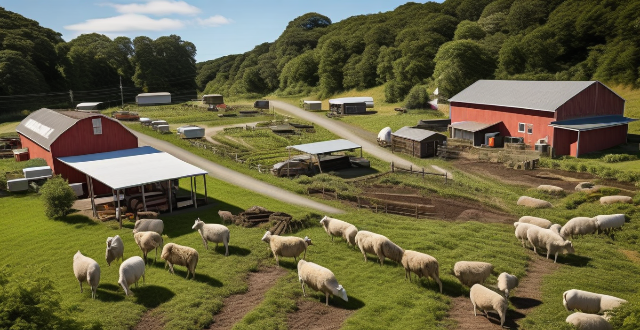
How might climate-induced natural disasters, such as droughts and floods, impact global food distribution ?
Climate-induced natural disasters significantly impact global food distribution by causing crop failures, livestock losses, and infrastructure damage. Droughts and floods reduce water availability for crops or wash away topsoil, leading to reduced yields or complete crop failures. Examples include wheat, corn, and rice production disruptions in major producing regions. Floods and droughts also lead to the loss of livestock like cattle, poultry, and sheep, affecting meat, dairy, and egg supplies. Infrastructure damage such as roads, bridges, ports, and storage facilities disrupts the supply chain, making it difficult to transport and store food. Understanding these impacts is crucial for preparing and mitigating their effects on food systems.
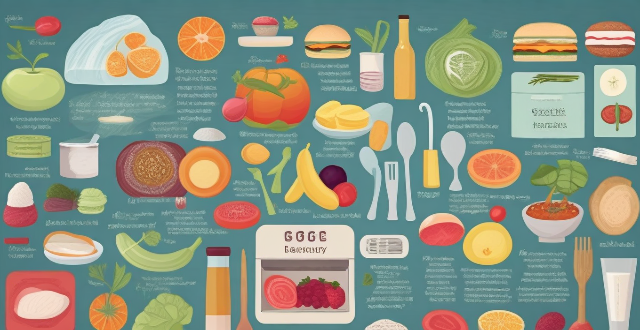
What is the relationship between climate loss and damage and food security ?
The article discusses the complex relationship between climate loss and damage and food security, highlighting how extreme weather events and slower changes in climate can impact food production. It details the consequences of these impacts for food security, such as reduced crop yields, increased prices, loss of livelihoods, nutritional impacts, and displacement. The article also suggests mitigation and adaptation strategies to address this issue, including reducing greenhouse gas emissions, sustainable agriculture practices, crop diversification, improved irrigation systems, early warning systems, and research and development. The conclusion emphasizes the need for collective action to ensure food security in the face of climate change.
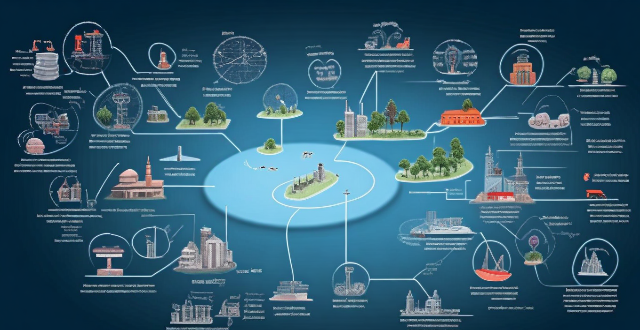
What are the potential solutions for climate change in agriculture ?
This article explores potential solutions for climate change in agriculture, including sustainable farming practices, water management, crop diversification and rotation, livestock management, energy efficiency and renewable energy, carbon offsetting and sequestration, research and development, and policy interventions. These solutions aim to mitigate the impacts of climate change on crop yields, water availability, and biodiversity, and help build a more resilient and sustainable agricultural sector capable of adapting to changing climate conditions.

How do different regions of the world experience the impacts of climate change on agriculture differently ?
Climate change affects agriculture differently across the globe, depending on local climate conditions, soil types, water availability, and agricultural practices. In tropical regions, high temperatures and humidity, along with frequent extreme weather events and pest and disease pressure, negatively impact crop yields. Arid and semi-arid regions face water scarcity due to reduced rainfall and increased evaporation rates, leading to limited agricultural productivity. Desertification causes soil degradation and loss of arable land. Temperate regions experience changes in precipitation patterns, affecting crop growth, while warmer winters can extend growing seasons. Extreme weather events can damage crops and reduce yields. Polar regions see extended growing seasons due to warming temperatures, but permafrost melting causes soil instability, and changes in ocean currents affect fishing industries. Mountainous regions face changes in temperature and precipitation that alter snowmelt timing and amount, affecting water availability for irrigation. Glacier retreat reduces water supplies for downstream communities and agriculture, while natural disasters like landslides destroy crops and damage infrastructure.
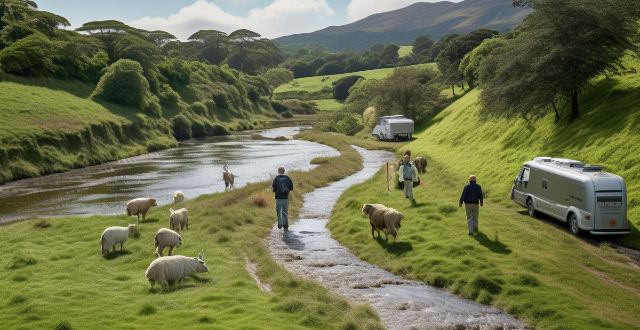
How can climate models be used to improve agricultural practices and food security ?
Climate models play a critical role in enhancing agricultural practices and ensuring food security by forecasting weather conditions, mitigating climate change effects, enhancing crop yield potential, and aiding in policy making. Applications include adapting to climate variability through crop diversification and improved plant breeding, strengthening resilience through water management and soil health maintenance. The use of these models is crucial for adapting to changing environmental conditions and ensuring global food security.

How do climate targets impact agricultural practices ?
Climate targets set by governments and international organizations play a significant role in shaping agricultural practices. These targets aim to reduce greenhouse gas emissions, promote sustainable development, and mitigate the impacts of climate change. The following are some ways in which climate targets impact agricultural practices: 1. Shifting towards Sustainable Farming Methods One of the primary impacts of climate targets is the shift towards more sustainable farming methods. This includes practices such as conservation tillage, integrated pest management, cover cropping, and agroforestry. 2. Adoption of Renewable Energy Sources To meet climate targets, farmers are encouraged to adopt renewable energy sources for their operations. This can include solar power, wind energy, and bioenergy. 3. Changes in Crop Choices and Rotations Climate targets may also lead to changes in crop choices and rotations to adapt to changing environmental conditions and reduce the carbon footprint of agriculture. This can involve planting perennial crops, diversifying crop rotations, and selecting climate-resilient crops. 4. Improved Water Management Water is a critical resource for agriculture, and climate targets often focus on improving water management to reduce water usage and protect water resources. This can involve dripper irrigation, rainwater harvesting, and planting water-efficient crops. 5. Carbon Sequestration and Soil Health Maintaining healthy soils is essential for mitigating climate change, as soils can act as carbon sinks. Climate targets encourage practices that improve soil health and increase carbon sequestration, such as composting, reduced tillage, and intercropping.

What measures can be taken to reduce agricultural water consumption ?
Agriculture is the largest consumer of water worldwide, accounting for approximately 70% of global freshwater withdrawals. Reducing agricultural water consumption is crucial for sustainable water management and food security. Here are some measures that can be taken to achieve this goal: 1. **Improved Irrigation Systems** - Drip irrigation delivers water directly to the root zone of plants, reducing waste through evaporation and runoff. - Sprinkler irrigation uses pipes or hoses to spray water over crops, allowing more precise control than surface methods. - Micro-irrigation includes drip tapes and micro-sprayers, which apply water slowly and directly to plant roots. 2. **Water-Saving Technologies** - Soil moisture sensors help farmers determine when and how much to irrigate based on soil moisture levels. - Weather stations provide data on rainfall, temperature, and humidity, enabling farmers to adjust irrigation schedules accordingly. - Automated control systems allow for real-time adjustments in irrigation based on sensor information. 3. **Efficient Crop Management** - Crop rotation helps maintain soil health and reduces water demand by alternating between high and low water-consuming crops. - Planting cover crops protects soil from erosion and improves its ability to retain moisture. - Intercropping leads to efficient use of resources, including water. 4. **Soil Health Management** - Composting adds organic matter, improving soil structure and making it better at holding water. - Minimal tillage helps maintain soil structure, reducing water loss through evaporation. - Mulching covers soil with layers of organic material, conserving moisture by reducing evaporation. 5. **Water Pricing and Policies** - Volumetric pricing encourages conservation among farmers by charging for water based on actual usage. - Subsidies for water-saving technologies promote adoption of water-efficient practices. - Regulations limiting excessive water extraction can drive efficiency improvements. 6. **Rainwater Harvesting** - Catchment systems collect rainwater from roofs or other surfaces for later use in irrigation. - Berms and swales divert runoff into fields or storage areas for future irrigation needs. 7. **Education and Training** - Extension programs provide farmers with knowledge about water-saving techniques through workshops and demonstrations. - Farmer field schools offer hands-on training sessions where farmers learn best practices directly in their fields. 8. **Genetic Improvement of Crops** - Drought-resistant varieties develop crop varieties that require less water without sacrificing yield. - Breeding programs enhance crops through selective breeding to increase their water use efficiency. 9. **Integrated Pest Management (IPM)** - Biological control methods reduce the need for water-intensive pesticide applications using natural predators. - Cultural practices like crop rotation and intercropping also help control pests naturally. 10. **Land Leveling** - Terrace construction on sloping lands helps retain water and prevent runoff. - Land leveling equipment ensures even water distribution during irrigation. By implementing these measures, agriculture can become more water-efficient, ensuring there is enough water available for both current and future generations while maintaining agricultural productivity.

How does climate variability impact agriculture and food security ?
Climate variability significantly impacts agriculture and food security by affecting crop yields, livestock production, and the availability and accessibility of food. Direct impacts include changes in temperature, precipitation, extreme weather events, and CO₂ levels, while indirect impacts involve pest and disease outbreaks, water resource availability, soil quality, ecosystem services, market prices and trade, food accessibility and nutrition, and farmer livelihoods. Mitigation and adaptation strategies such as crop diversification, improved water management, breeding resilient crops, sustainable soil management, early warning systems, insurance and safety nets, policy support, and international cooperation are essential for building a climate-resilient food system.

How does climate change impact the nutritional value of crops ?
Climate change is affecting the nutritional value of crops by altering CO2 levels, temperature fluctuations, and water availability. Elevated CO2 concentrations can lead to nutrient dilution in staple crops like wheat, rice, and soybeans. Temperature extremes cause protein denaturation and interfere with enzyme function, reducing nutrient content. Water stress from drought or flooding impairs nutrient uptake and synthesis. Adaptation strategies include breeding resilient crop varieties, implementing efficient irrigation systems, and using protective structures against extreme temperatures. By addressing these challenges, it's possible to maintain crop nutrition amidst climate change impacts.
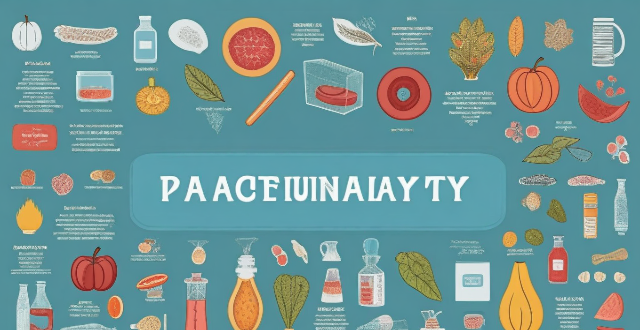
How do agricultural practices influence biodiversity ?
Agricultural practices significantly impact biodiversity, affecting ecosystem services like pollination and soil health. Monoculture reduces biodiversity due to habitat loss and pesticide use, while polyculture enhances it through diverse habitats and reduced chemical inputs. Organic farming benefits biodiversity by avoiding synthetic chemicals and promoting natural pest control, whereas conventional farming can harm it through pesticide toxicity and nutrient runoff. Land management practices like tillage disrupt soil ecosystems, while no-till farming preserves them. Water management also plays a role; sustainable practices like drip irrigation conserve water resources and support aquatic life. Adopting sustainable agricultural methods can help conserve biodiversity while maintaining productive systems.

What are the most sustainable and eco-friendly jobs available today ?
The most sustainable and eco-friendly jobs available today include renewable energy specialist, environmental scientist, sustainability manager, green building architect/designer, and organic farmer/gardener. Renewable energy specialists work in industries such as solar, wind, hydro, and geothermal power generation to reduce reliance on non-renewable sources of energy. Environmental scientists study natural environments and how human activities affect them, developing solutions for environmental problems such as pollution control, waste management, and conservation efforts. Sustainability managers oversee an organization's efforts to reduce its environmental impact while maintaining profitability. Green building architects/designers specialize in designing buildings that minimize their environmental impact while providing comfortable living spaces. Organic farmers/gardeners grow crops without using synthetic pesticides or fertilizers, relying on natural methods such as crop rotation, composting, and biological pest control to maintain healthy soil and produce high-quality food.

What is the relationship between biodiversity and ecosystem services ?
The text discusses the relationship between biodiversity and ecosystem services, emphasizing that biodiversity is crucial for maintaining the health and functionality of ecosystems. It highlights that diverse species contribute to ecological processes, and many ecosystem services rely on specific species or groups. High biodiversity can lead to more resilient ecosystems, while its loss can diminish these services. The text suggests that conservation efforts can enhance both biodiversity and ecosystem services, underlining the importance of recognizing and protecting this relationship for human well-being.
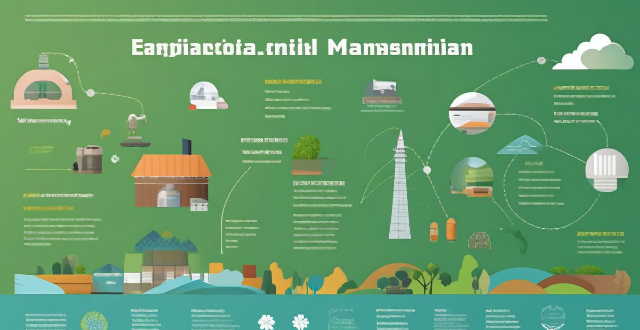
How does climate adaptation impact agricultural practices ?
Climate adaptation is crucial for maintaining agricultural productivity and sustainability amidst shifting environmental conditions. It impacts agricultural practices in several ways, including changes in planting schedules, use of drought-resistant crops, water management techniques, soil health management, livestock management, pest and disease management, diversification of crops and income streams, adoption of smart technologies, and policy and infrastructure support. By embracing these changes, farmers can continue to produce food while minimizing the environmental impact of their operations and building resilience against future climate challenges.
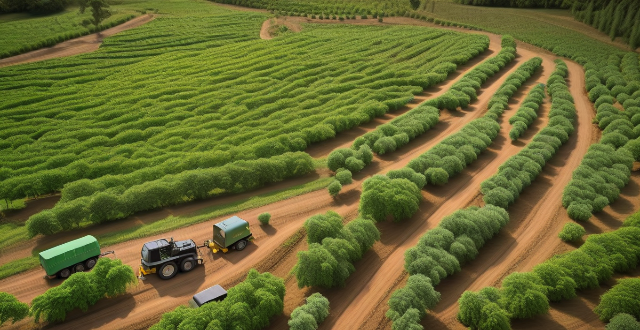
How do different regions around the world cope with climate change-related threats to their food sources ?
Coping with Climate Change: Global Strategies for Food Security explores how various regions are adapting agricultural practices to ensure food security amidst climate change. Asia is focusing on modernizing irrigation systems and researching drought-resistant crops. Africa is promoting small-scale farming techniques and agroforestry. Europe is utilizing precision farming and developing climate-smart crops. North America is practicing rotational grazing and using genetic engineering for more resilient crops. South America is embracing agroecology and community-based adaptation. Australia and Oceania are managing soil salinity issues and heat tolerance research. Policy initiatives include improving access to finance for smallholder farmers and establishing regulatory frameworks. Community-level actions involve farmer training programs and local innovations like community gardens. Technology adoption includes mobile apps for weather information and remote sensing for crop monitoring. The conclusion emphasizes the importance of combining traditional knowledge with modern technology to address climate change and ensure global food security.
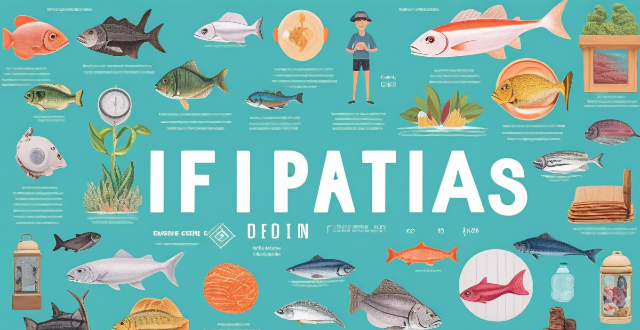
What are the economic benefits of biodiversity ?
Biodiversity plays a significant role in the global economy by providing various economic benefits. These include increased resilience to climate change, support for sustainable agriculture, tourism revenue, pharmaceutical and medical research opportunities, ecosystem services, fisheries and food security, cultural and aesthetic value, innovation and education, risk management and insurance, and trade and livelihoods. Preserving biodiversity is crucial for maintaining these economic benefits across different sectors.

What is the relationship between biodiversity and traditional knowledge ?
The text discusses the complex interrelationship between biodiversity and traditional knowledge, highlighting how each influences and shapes the other in various ways. It explains that communities living in diverse ecosystems develop unique practices adapted to their surroundings, such as specific crop rotations or intercropping methods suited to local biodiversity. The availability of certain species also influences dietary habits, with coastal communities relying heavily on seafood while inland communities depend more on terrestrial resources. Furthermore, high biodiversity regions often lead to extensive knowledge about medicinal plants, with Indigenous communities having long histories of using local flora for healing. The need for sustainable harvesting of these plants can lead to traditional conservation practices like rotating harvest areas or planting more of certain species to ensure their survival. On the other hand, traditional knowledge often includes practices for managing resources sustainably, such as fishing techniques that do not deplete fish populations or agricultural methods that maintain soil fertility. In many cultures, certain areas are considered sacred and are protected from exploitation, serving as de facto conservation reserves. However, as biodiversity declines, so does the traditional knowledge associated with it. The loss of certain species can lead to the disappearance of associated cultural practices and knowledge. With diminished biodiversity, traditional knowledge becomes less effective, leaving communities vulnerable to ecological shifts. In conclusion, the relationship between biodiversity and traditional knowledge is one of mutual dependence and influence. While biodiversity shapes the development of traditional knowledge, this knowledge also plays a critical role in maintaining and conserving biodiversity. Preserving both is essential for the well-being of our planet and its people.
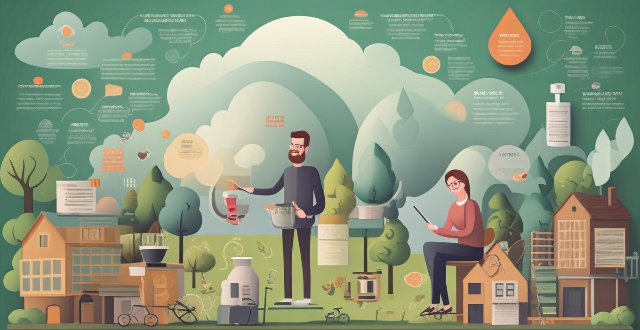
What are some innovative solutions for mitigating the effects of climate change on biodiversity ?
Climate change poses a significant threat to biodiversity, but there are several innovative solutions that can help mitigate its effects. These include protecting and restoring habitats, promoting sustainable land use practices, encouraging biodiversity-friendly farming practices, supporting indigenous communities, investing in research and technology, and promoting education and awareness. By implementing these strategies, we can create more resilient ecosystems that are better able to withstand the impacts of climate change.